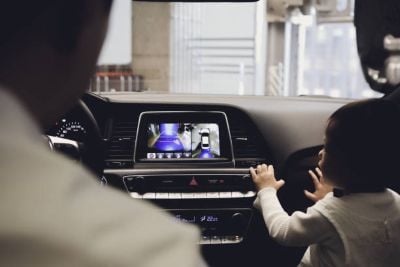How about getting a dash cam for your car? That’s a good call! With our roads getting busier, having a dash cam is like having an extra pair of eyes on the road. But here's the big question: single cam vs dual cam — which one should you go for?
In this article, we’ll break down the difference between front and dual dash cams, help you decide which one suits your driving style, and answer the most common questions before buying one. So let’s get into it.


Editor
Mae An NG chevron_right
Table of Contents
What’s the Difference: Front vs Dual Dash Cam?
|
Feature |
Front Dash Cam |
Dual Dash Cam |
|
Cameras |
1 (front only) |
2 (front + rear) |
|
Coverage |
Records what’s in front |
Covers front and back |
|
Price |
Cheaper |
Slightly more expensive |
|
Installation |
Easier |
A bit more wiring is involved |
|
Best For |
Light users, budget buyers |
Full protection, families, and Grab drivers |
What is a single dash cam?
A single dash cam, also called a front dash cam, only records what's happening in front of your car. It’s the most basic type and usually the most affordable.
Why go for a front-only dash cam?
- Cheaper – Perfect if you're on a budget.
- Easy to install – Just plug and play, usually no wiring needed.
- Good enough for basic protection – Can record accidents, road rage, or crazy drivers in front of you.
Best for:
- Grab or food delivery riders who mainly want to record road incidents.
- Drivers who park in secure areas and don’t need rear coverage.
- Beginners who want something simple.
But Keep in Mind:
- You won’t catch anything happening behind your car.
- Not helpful for rear-end collisions (which are super common in city traffic).
- No proof that someone hits your car while it's parked and drives off from the back.
What is a dual dash cam?
If you’re the type who wants full coverage, a dual dash cam is the way to go. This setup gives you front and rear views, and in some cases, even a cabin view (especially for rideshare or taxi drivers).
Why choose a dual dash cam?
- Full coverage – Front and back are both covered.
- Better for accidents – Can protect you in hit-and-run or rear-end cases.
- Great for parking mode – Catch suspicious activity around your car.
Best for:
- E-hailing drivers like Grab or inDrive – protect yourself from passengers and road incidents.
- Long-distance drivers.
- People who park outside, especially in shady areas.
Trade-offs:
- Slightly pricier — usually RM250 to RM800, depending on brand and features.
- Installation is a bit trickier (some shops charge RM50–RM150 for a full setup).
- Rear camera placement matters — too high or too low, and you’ll miss key footage.
Single Cam vs Dual Cam: Which should you buy?
Here’s a quick side-by-side to help you decide:
|
Feature |
Single Cam |
Dual Cam |
|
Price |
Cheaper |
More expensive |
|
Installation |
Easy |
Slightly complex |
|
Front Coverage |
Yes |
Yes |
|
Rear Coverage |
No |
Yes |
|
Best For |
Budget drivers, new users |
Serious drivers, e-hailing, and families |
|
Parking Mode |
Basic |
Better |
|
Protection Level |
Medium |
High |
So, if you're comparing single cam vs dual cam, it depends on your needs. Want full protection? Go dual. On a tight budget? A single cam is still way better than nothing.
Final Thoughts

In Malaysia, having a dash cam is no longer a luxury; it's a must-have. With so many cases of road bullies, hit-and-run, and even parking lot accidents, it’s better to stay protected.
- If you’re just starting and don’t want to spend much, go for a front dash cam.
- But if you want full peace of mind and better coverage, invest in a dual dash cam.
Either way, don’t wait until something bad happens. Get the best dash cam now and drive with confidence!
